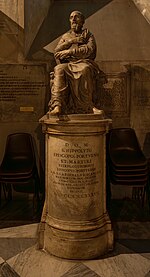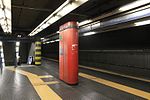University of Rome Unitelma Sapienza
The University of Rome Unitelma Sapienza, formerly known as Unitelma Sapienza University (Italian: Università telematica "UNITELMA Sapienza"), often simply abbreviated as "Unitelma - Sapienza," is a private university founded in 2004 in Rome, Italy. Unitelma - Sapienza is the only on-line Italian university that is maintained by a consortium composed of public universities and enterprises. Since 2010 it is linked to and owned by one of the top Italian public universities, Sapienza University of Rome, which uses Unitelma Sapienza to promote the right to education and to support non-traditional students. Sapienza University of Rome, one of the largest universities in Europe by enrollment, has over 130,000 students and a staff of 4,000 teachers and researchers. Sapienza and Unitelma Sapienza, which are co-located in Rome, offer multiple joint degrees with faculty often teaching at both universities.
Excerpt from the Wikipedia article University of Rome Unitelma Sapienza (License: CC BY-SA 3.0, Authors).University of Rome Unitelma Sapienza
Viale Regina Elena, Rome Municipio Roma II
Geographical coordinates (GPS) Address Nearby Places Show on map
Geographical coordinates (GPS)
| Latitude | Longitude |
|---|---|
| N 41.9045 ° | E 12.518 ° |
Address
Istituto Superiore di Sanità
Viale Regina Elena 299
00161 Rome, Municipio Roma II
Lazio, Italy
Open on Google Maps







